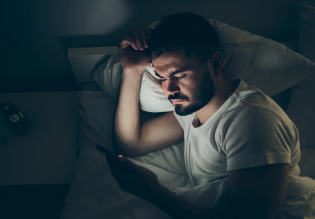Migraine
Table of contents
- 00. Intro
- 01. What causes migraines?
- 02. What are the symptoms of migraines?
- 03. Types of migraine
- 04. How can migraines be treated?
00.
Intro
A migraine is a headache that can cause severe pain or a throbbing and pulsing sensation on the side of the head. They can last for hours to days and can be accompanied by sensitivity to light and sound as well as nausea and vomiting. Migraines vary from person to person and for some people they don’t happen often, while others may experience them several times per month.
A migraine may be triggered for a variety of reasons including diet (some foods and alcohol), changes in hormone levels, and emotional, physical and environmental factors such as loud noises, bright lights and smoking.
Migraines are classified as a neurological disease that can cause debilitating throbbing pain.
01.
What causes migraines?
The exact cause of migraines is not known, and it likely differs for different people.
A lot of people that suffer from migraines note a warning signal before the headache pain begins. This is known as an aura and typically lasts for 10-60 minutes. Aura symptoms include:
• Seeing flashing dots, sparkles or lights
• Blind spots in your vision
• Numb or tingling skin
• Ringing in your ears
• Seeing wavy lines
02.
What are the symptoms of migraines?
The main symptom of a migraine is a headache that usually gets worse with movement. Migraines are often mixed up with regular headaches, however, a migraine can be debilitating to an individual, preventing them from carrying out normal activities.
A migraine attack may progress through four stages, the symptoms of which can overlap. These include:
• Early signs (pro-drome) – 1-2 days beforehand such as constipation, mood changes, fluid retention and increased urination, mood changes, food cravings and neck stiffness
• Aura – These symptoms may be felt before or during the migraine and include visual disturbances such as flashes of light or zig-zag patterns, numbness or tingling in the face or an arm, dizziness or difficulty speaking.
• Headache – Pain on one or both sides of the head that throbs or pulses, nausea and vomiting and sensitivity to light and sound.
• Hangover or post-drome phase – You may feel washed out, confused and dizzy in the following days.
03.
Types of migraine
There are several types of migraines and the same types can also go by different names. These are the most common types of migraine:

Migraine with aura
Sometimes referred to as a complicated migraine.

Migraine without aura
Sometimes referred to as a common migraine.

Migraine without head pain
Sometimes referred to as the “silent migraine”.

Hemiplegic migraine
This can cause temporary paralysis or neurological or sensory changes on one side of your body.

Retinal migraine
You may notice temporary, partial or complete loss of vision in one of your eyes, along with a dull ache behind the eye that may spread to the rest of your head.

Chronic migraine
This is when a migraine occurs for at least 15 days in a month.
04.
How can migraines be treated?
If you are experiencing the symptoms of migraines regularly, you should keep a record and seek medical advice. You should also seek medical assistance immediately if you have these symptoms after a head injury, the headache is severe and sudden, the symptoms are accompanied by a fever or stiff neck or seizures, or you have an ongoing headache that gets worse with movement, coughing or physical activity.
A doctor will look at your medical history and may order some tests to rule out other causes for your migraines including an MRI or CT scan.
Treatments are designed to stop the symptoms and prevent further attacks. Over-the-counter pain relievers can assist with symptoms as can migraine specific prescription drugs. Anti-sickness medications can also be used for helping with nausea and vomiting.
Preventative medications may be prescribed when other medicines do not work and these can help with reducing the severity and frequency of migraines.
There are some things you can do at home to assist with migraines:
• Recognise migraine triggers and avoid or minimise them
• Manage stress and anxiety
• Establish a daily routine with regular sleep, exercise and meal times
• Limit caffeine and stay hydrated
To relieve migraine symptoms:
• Lie down and rest in a dark, quiet room
• Use a cold flannel on your head
• Avoid sugary drinks and alcohol
• Relax through meditation
• Avoid looking at TV and screens and do not drive
Axon can also help with...

Back Pain
Back pain is a common condition for many people and can be caused by a wide range of issues inc. damage to ligaments and muscles, discs, nerves, or vertebrae.

Neck Pain
Neck pain is a common ailment caused by several different factors inc. muscle strains, worn joints, nerve compression, injuries, diseases or muscle spasms.

Migraine
A migraine may be triggered for a variety of reasons inc. diet (some foods and alcohol), changes in hormone levels, and emotional, physical and environmental factors.

Insomnia
Insomnia is a very common sleep disorder that can sap not only your energy level and mood but also your health, work performance and quality of life.